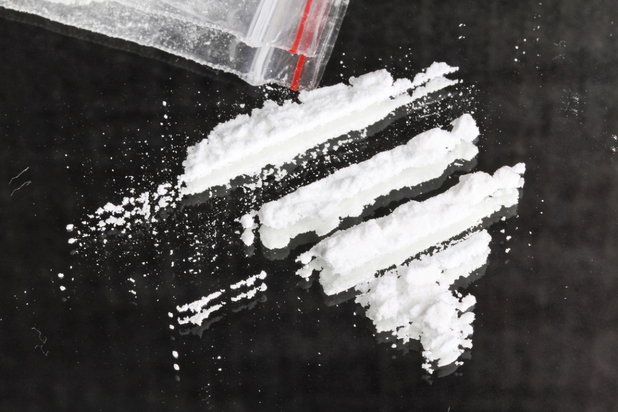Cocaine has been around since early recorded history in South American countries. It was used by the natives in that region as a stimulant and for purposes of healing. Early medical use of cocaine, beginning around the 1800s, included use as an anesthetic and pain reliever. The numbing properties of cocaine remained popular for use in dentistry and surgeries through the mid-1900s.
Recreational use and abuse of cocaine has been seen in all populations and at all socioeconomic levels throughout the world. The indigenous tribes of South America chewed the leaves of the coca plant. Later use of cocaine ranged from chewing the leaves to rubbing the powdered form of cocaine on the gums and teeth for its numbing properties, placing powdered cocaine on cigarettes for inhalation, smoking crack (a processed form of cocaine that creates “rocks” called crack), snorting it through the nasal passages, or injecting a liquefied form of cocaine with a syringe.
Popular use of cocaine increased during the early 1900s; and its early use spiked from 1890 to 1905. Available in cigarettes, small boxes of powdered cocaine, or available (with syringe) for purchase in drug stores, it was used as a stimulant to increase energy and productivity. Laws were established in the early 1900s to control the manufacture and sale of drugs such as cocaine and morphine and made them illegal.
Coca from the coca plant, combined with caffeine from the kola nut, were key ingredients in the original formula for Coca Cola, which was initially created as a "nerve tonic," but later sold (beginning in 1886) as a popular carbonated soft drink that was marketed as boosting your "pep" and said to be good for your health.
During WWII, cocaine use was promoted by the military to increase stamina for soldiers in combat, especially pilots and guards or watchers who needed to stay alert for long periods.
Cocaine continues to be a drug of abuse today, and a problem for law enforcement agencies, which have established pharmaceutical restrictions on this drug and similar substances which are addictive. Despite dire consequences of addiction and use of cocaine, it remains a popular substance. Reported sales of cocaine in the U.S. run as high as $70 million during 2005.
Cocaine Effects and Dangers
How cocaine operates in the brain of the user, no matter the method in which it is used, causes over-stimulation of the production and processing of dopamine. Dopamine creates the “pleasure” sensation a person receives when the mid-brain is stimulated by the prospect or feeling of pleasure, such as the sight of a loved one, smell of something tasty, or other sensory input that denotes anticipated pleasure. Cocaine creates a cycle in the brain where the dopamine consistently “hits” the target area. This overload of pleasure is the “high” that cocaine users receive.
How cocaine affects the body of the user is also significant. Cocaine users experience increased temperature, blood pressure and heart rates. They also manifest restricted blood vessels and dilated pupils. Headaches and abdominal pain are common, due to the constricted blood flow in the body. Low appetite is common, and many cocaine users experience pronounced weight loss and can become under-nourished.
Cocaine users have a high risk for heart attack or stroke, often fatal. Other health problems or risks develop as use continues. One is risky sexual behavior, due to the user’s need to find pleasurable sensations to increase their high. Because it is a stimulant drug, cocaine users lose sleep and can become delusional. This increases the rate or frequency of risky behavior.
Depending on how cocaine is used, specific health risks can exist for users:
- Snorting cocaine may create loss of smell, ulcers in the nasal passages or throat of the user, bloody noses (even to the extent of hemorrhage), and may lead to permanent damage.
- Loss of blood flow to the intestines of someone who swallows cocaine can cause gangrene in the stomach or intestines.
- Those who smoke cocaine (or crack) can develop allergies or inflammation of their mouth, nose, throat and lungs, even cancer from toxic fumes.
- Injecting cocaine may lead to hepatitis, blood infections (including HIV/AIDS), and infected injection sites.
How Addictive Is Cocaine?
Cocaine users typically go through severely depressed mood shifts when coming off the drug. This is the brain’s way of re-stabilizing to balance the brain’s homeostasis.
Users begin to use more of the drug to maintain the high, and that is how the cycle of addiction begins. Once they begin this pattern, staying off cocaine creates feelings of depression, sadness and despair. The drug has its hooks in the brain of the addict. Cocaine has been recognized as highly addictive, even after one use.
Over time, this overload, or “flooding” of the dopamine receptors in the brain can create a new pattern for pleasure in the mid-brain.
Cocaine Overdose
Risk of overdose on cocaine is great. Because the drug’s powerful pleasurable effects wear off quickly, the user may increase the dose or use more often to maintain the high. The heart is most often impacted by use of this type. Heart attack and stroke are common methods of death from overdose.
Cocaine Withdrawal
Cocaine withdrawal is not fatal, but can be unpleasant. The overloaded pleasure center of the brain will work to maintain balance. As it seeks to gain this balance, it shuts down production of endorphins. This creates depression for the user. The user may feel this depressed state for several weeks, even months. Stability is restored slowly, so the user must maintain abstinence for a substantial period of time to regain normal brain function.
Cocaine Treatment
Users can and do recover from cocaine addiction. Although they find it difficult to recognize pleasure for a while, they can find joy in life over time. Teaching users to practice gratitude and mindfulness are good methods for reinstating a positive outlook on their life situation. Finding simple pleasures in good food, exercise and healthful ways creates recovery patterns they can grow into. Immediate gratification is their addiction, and they must learn the rewards of delaying gratification and pleasure by working toward new pleasurable goals.
However, some users continue to seek high risk situations or dangerous situations where they receive large doses of adrenaline to gain the pleasure they once found in cocaine. This can be offset with re-training the addict to focus on beneficial, long-term results.
If you or someone you know is seeking help from cocaine addiction, please visit our directory of treatment centers or call 800-772-8219 to start the path to recovery today.








